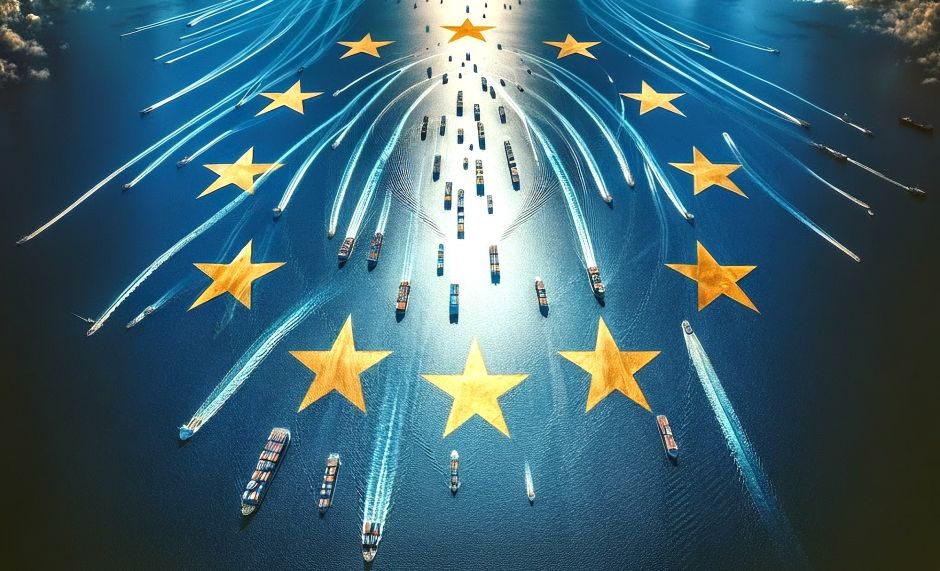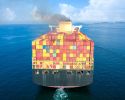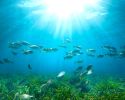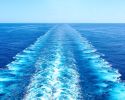EU report: Shipping must do more to reduce emissions

Europe’s Maritime Sector is Making Progress Towards Greater Sustainability but Needs to Do More. Major investments in research and innovation are crucial if the EU’s climate and environmental goals are to be met, writes the European Maritime Safety Agency (EMSA) and the European Environment Agency (EEA) in a new report.
Last week, the EMSA and the EEA jointly published the second edition of The Second European Maritime Transport Environmental Report (EMTER), which examines emissions from the maritime sector and its progress in achieving the EU’s climate and environmental targets.
According to the report, shipping accounts for 14.2% of the EU’s transport-related CO₂ emissions, placing it behind road transport but nearly on par with aviation. Unfortunately, the trend is not moving in the right direction. Except for the pandemic year of 2020, CO₂ emissions from shipping have increased year by year since 2015, even though emissions per transported unit have decreased.
Between 2018 and 2023, methane emissions from shipping more than doubled, accounting for 26% of the transport sector’s total methane emissions in 2022. This is mainly due to the increased use of liquefied natural gas (LNG).
Emissions of nitrogen oxides (NOx) from shipping have also risen by approximately 10% across the EU between 2015 and 2023, with the sector accounting for 39% of transport-related NOx emissions in 2022.
“The report reflects the urgent need for the maritime transport sector to increase its efforts to reduce its carbon footprint and other environmental impacts", said Leena Ylä-Mononen, Executive Director of the EEA.
Shipping also has a significant and growing impact on the marine environment through pollution from oil spills, wastewater discharges, and underwater noise pollution.
"Our waters are under pressure from climate change, biodiversity loss, mismanagement and pollution. This is why I will launch an EU Water Resilience Strategy. We need a paradigm shift on how we value water, to preserve water quality and quantity and to boost the competitive edge of our water industry. We need a ‘source to sea’ approach as activities at sea are closely linked to those on land. Now is the time for transformative change in maritime and water sectors so we can make Europe water-resilient”, said Jessika Roswall, EU Commissioner for Environment, Water, and Circular Economy.
The report also emphasizes “the critical role that research and innovation play in enabling the maritime sector’s transition toward environmental sustainability. Significant EU investments are driving the development of clean technologies in various areas, such as renewable energy, hydrogen, and carbon capture.”
New EU legislation is also helping. Last year, shipping was incorporated into the EU Emissions Trading System (ETS), and revenues from it finance the Innovation Fund—one of the world’s largest programs for low-emission technologies, with over 300 maritime-related projects already supported. In January, FuelEU Maritime came into force, which will gradually tighten the limit on the greenhouse gas intensity of fuels used by ships.
The report also notes that more and more ships are being equipped with alternative fuel systems and that battery use is expected to double in the coming years. The number of ships running on methanol is still low but increasing, as is the use of wind power and hydrogen.
-
 NextWave – en podd som ska locka unga
NextWave – en podd som ska locka unga -
 Ny studie: Eldrivna pendelbåtar kan effektivisera Stockholms kollektivtrafik
Ny studie: Eldrivna pendelbåtar kan effektivisera Stockholms kollektivtrafik -
 Sjöfartens utsläpp ökar
Sjöfartens utsläpp ökar -
 Sociala relationer påverkar val av bränsle
Sociala relationer påverkar val av bränsle -
 Sjöfartens omställning kräver ”mjukare” påtryckningar
Sjöfartens omställning kräver ”mjukare” påtryckningar -
 Hon hade avtalad tid med Kapten ynkrygg
Hon hade avtalad tid med Kapten ynkrygg -
 Lighthouse omvärldsanalys 2025 – osäkerhet och tullar präglar sjöfarten
Lighthouse omvärldsanalys 2025 – osäkerhet och tullar präglar sjöfarten -
 Se seminariet Shipping in the Marine Environment
Se seminariet Shipping in the Marine Environment -
 Vad betyder egentligen de 90 procenten?
Vad betyder egentligen de 90 procenten? -
 Hålla där...
Hålla där...

